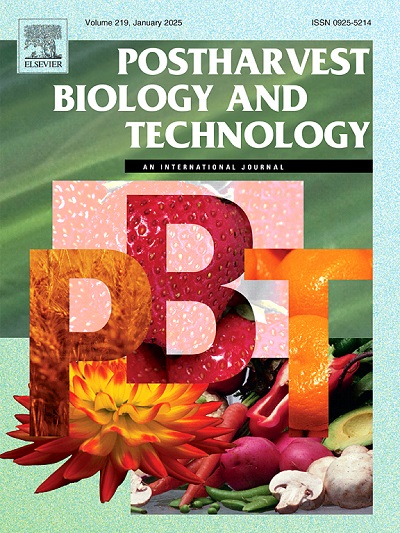Effects of packaging and storage temperature on shelled pecan quality
IF 6.4
1区 农林科学
Q1 AGRONOMY
引用次数: 0
Abstract
The effect of storage temperature (8, 23, and 32 °C; 65 %RH) and packaging (carboard cartons, vacuum packages, MAP packaging) on the physical properties and consumer acceptability of pecans (‘Stuart’ and ‘Western Schley’) was assessed over 24 months. Higher temperature (>23 °C) had the greatest influence on darkening (lower L*) and the color of ‘Stuart’ pecans remained lighter than ‘Western Schley’ throughout the study. There was a general decline in firmness over time, particularly for samples stored in cardboard cartons. ‘Western Schley’ and ‘Stuart’ pecans had similar overall liking, appearance, flavor, and texture scores (6.9–7.2 on a 9-pt scale). Instrumental measures of firmness and lightness (L*) were most correlated with overall likeability. ‘Stuart’ pecans failed (>25 % rejection) more frequently and earlier in the storage period than ‘Western Schley’. Overall, modified atmosphere packaging (MAP) and storage at 8 °C led to less darkening and sensory changes. Over 24 months, samples stored in cartons failed (>25 % rejection) most frequently. Sensory data indicated that acceptability was most determined by changes in appearance and flavor. At higher temperature (23 or 32 °C) MAP provided the best protection against darkening.
求助全文
约1分钟内获得全文
求助全文
来源期刊

Postharvest Biology and Technology
农林科学-农艺学
CiteScore
12.00
自引率
11.40%
发文量
309
审稿时长
38 days
期刊介绍:
The journal is devoted exclusively to the publication of original papers, review articles and frontiers articles on biological and technological postharvest research. This includes the areas of postharvest storage, treatments and underpinning mechanisms, quality evaluation, packaging, handling and distribution of fresh horticultural crops including fruit, vegetables, flowers and nuts, but excluding grains, seeds and forages.
Papers reporting novel insights from fundamental and interdisciplinary research will be particularly encouraged. These disciplines include systems biology, bioinformatics, entomology, plant physiology, plant pathology, (bio)chemistry, engineering, modelling, and technologies for nondestructive testing.
Manuscripts on fresh food crops that will be further processed after postharvest storage, or on food processes beyond refrigeration, packaging and minimal processing will not be considered.
 求助内容:
求助内容: 应助结果提醒方式:
应助结果提醒方式:


